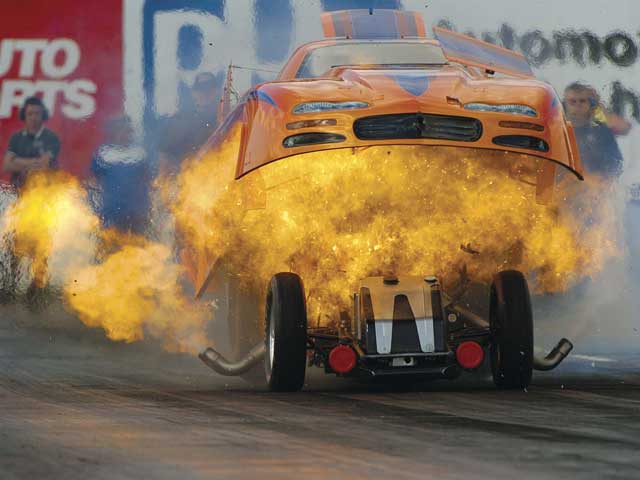Drag Racing Behavior
 Our productivity-by-the-minute culture is killing us.
Our productivity-by-the-minute culture is killing us.
In business speed is king, and with it comes our short-sighted drag racing behavior. As we pull to the starting light our big engines shake and rumble, our pipes shoot flames, and our tires smoke. We stomp the throttle, accelerate to mach 1, kill the engine, and throw the chute. A quarter mile covered in record time, and champagne celebration.
But, because the pace was beyond sustainable, we can’t race again until the damage is repaired. Because it ran too hot the pit crew must pull the engine, because the torque was so outrageous the transmission must be swapped, and because the vibrations were so severe the frame must be checked for metal fatigue. But this is just another opportunity for more racing.
We externalize the setup, design the process for quick changeover, reduce waste, and focus on the vital few. No matter the pit crew doesn’t get sleep, or their families miss them. Engine swapped in record time, and obligatory celebration.
Sure, going fast is good. But business can’t be a series of back-to-back sprints. Plain and simple – people cannot sprint every day, all day. Business should be thought of as a marathon. A marathon run at a respectable pace, but a pace we’ve trained for, a pace we can sustain. With a torn hamstring the fastest sprinter makes no forward progress, and even the slowest marathoner is faster.
Sprint, yes, but only when it makes sense. Sprint, yes, but provide recovery time. Sprint, yes, but not if it will do personal harm.
Increasing speed is directionally correct, but our time horizon is too short. Instead of optimizing over a six second quarter mile, we should optimize for a marathon.
In our chase for speed’s euphoric high, our drug of choice is efficiency. Like speed, efficiency is good. But, just as speed’s time horizon is too short, efficiency’s scale of optimization is too small. We optimize locally and the net result is global sub-optimization. This is clearly an artifact of what we measure. Clearly, we must measure differently.
Every day we chase the dopamine high of efficiency, but ignore the mind-blowing power of effectiveness. If you sprint day after day, you may be efficient, but you’re definitely ineffective. Sprint every day for a month, sleep four hours a night, and spend six weeks away from your family. Are you really in a good position to make a make-or-break decision? How can you possibly be effective? I wish Finance knew how to measure effectiveness as well as it does efficiency.
As a company leader, stop sprinting. As a company leader, stop optimizing locally. As a company leader, stop focusing on efficiency. As a company leader, demonstrate and reward effectiveness. As a company leader, go home and spend time with your family.
 Mike Shipulski
Mike Shipulski
This is an eloquent statement on the problem of short-term thinking and the rush-rush culture. Often we sprint because we didn’t plan correctly. Then sprinting becomes, over time, the way we are hardwired.
Nice job, Mike!
Eloquently put, Mike. I remember as a child running down a hill so fast my legs could not keep up with how fast the rest of my body was accelerating. Leadership does that in the course of needing to meet that monthly metric. Kind of like running so fast you can’t maintain effectiveness…as you say. Something’s going to suffer for it. In my case it was the skin on my hands and knees.
Nice analogy. I believe many of our “drag races” are the result of being in a constant reactionary/defensive posture. It can come from many directions; trying to compete in too many arenas, lack of market instincts, resting too long on past successes. The bottom line is those who work to their strengths and cultivate a culture of innovation are the ones who establish the pace. The rest are left working twice as hard in half the time just to keep up.